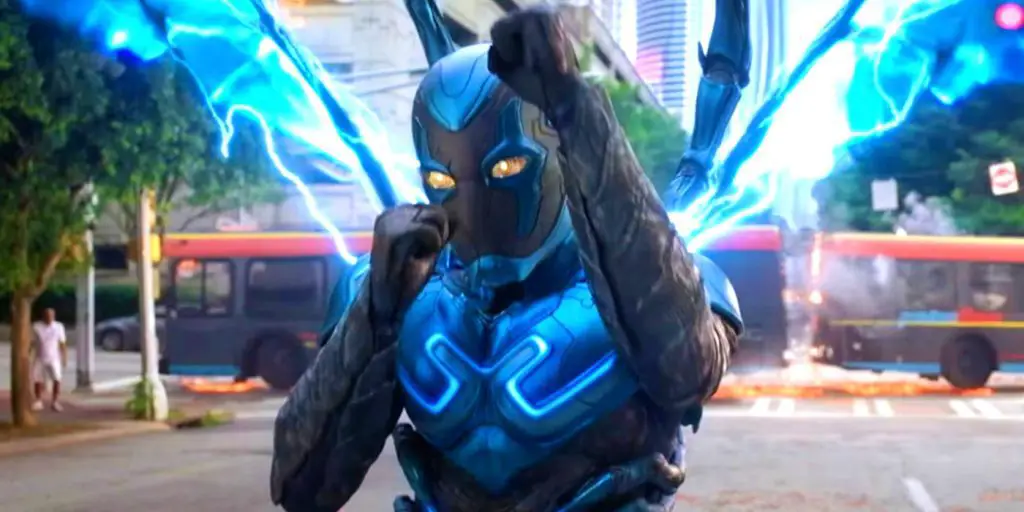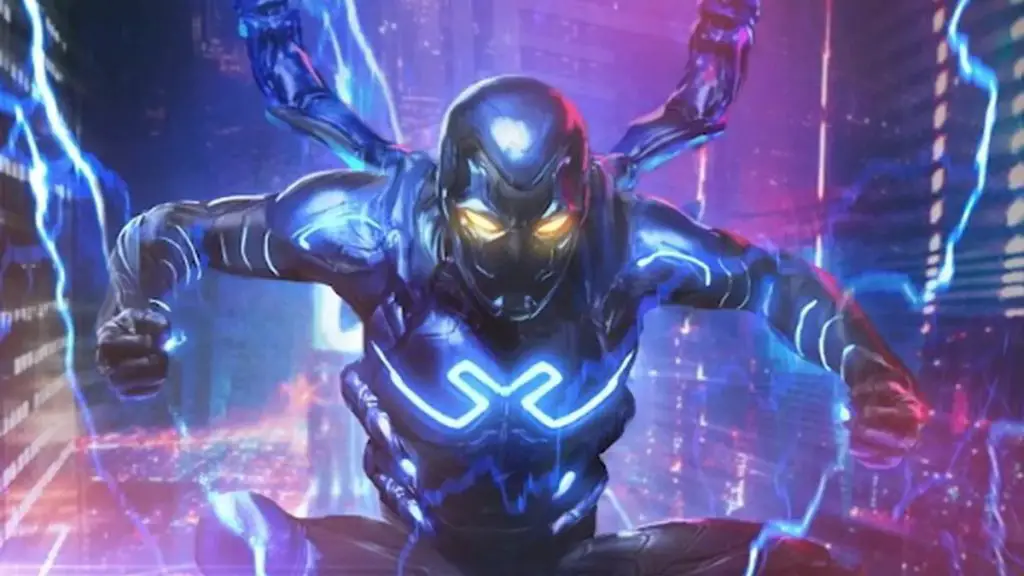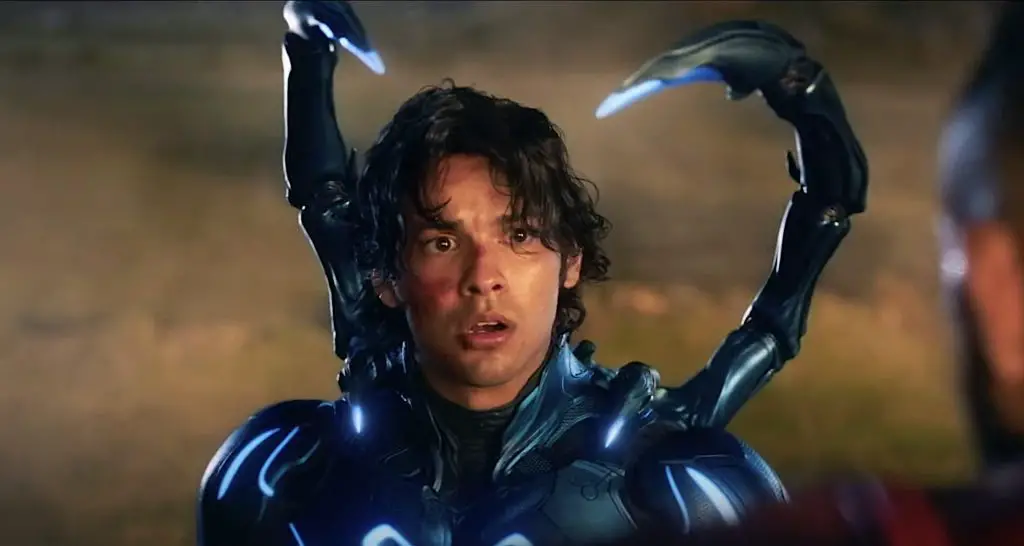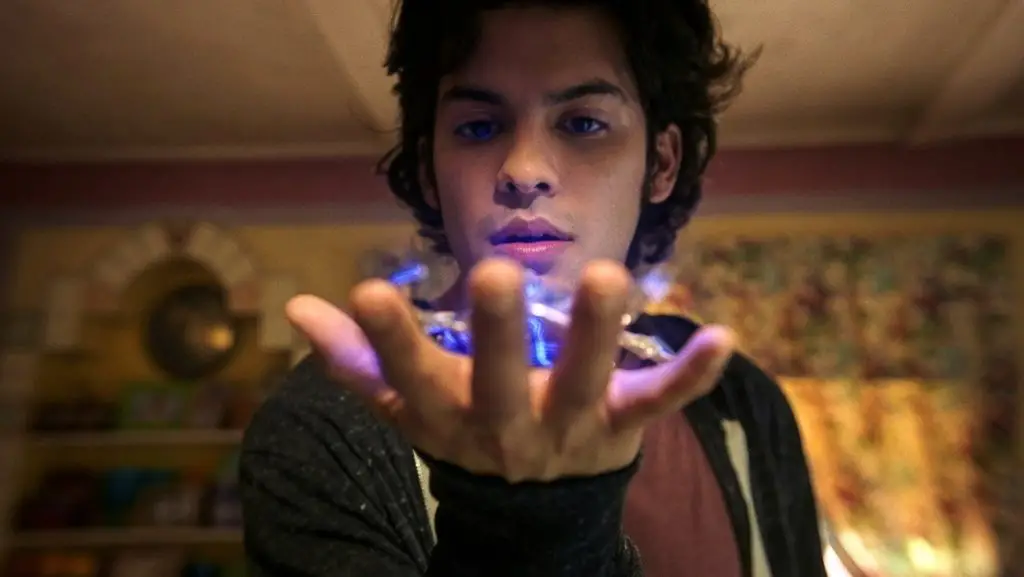Blue Beetle’s two thrilling end-credits sequences have piqued the curiosity of many. With the esteemed Xolo Maridueña of Cobra Kai making his grand entrance into the DC world with this film, it’s hard not to wonder where DC plans to take this hero next. Considering DC’s previous pattern, the inclusion of not just one but two end-credits scenes is a promising sign. Analyzing the trajectory of Blue Beetle’s production, it appears premature for James Gunn and Peter Safran to sideline such a fresh character immediately after his debut.
Are These End-Credits Worth the Hype?

The dual end-credits of Blue Beetle have distinct messages for viewers. Right after the primary credits that praise the stellar cast, the initial end-credits drop hints of future escapades with our newest hero. While this tease suggests potential sequels, DC Films has opted for a conservative approach with Blue Beetle’s unveiling, particularly in the wake of the lackluster performances of both Shazam! Fury of the Gods and The Flash.
The concluding end-credits scene pays a touching tribute to the Latino heritage of Jaime Reyes, Blue Beetle’s alter ego. This nod to Mexican culture might go over some heads, but it’s a treasure trove for those eager to delve deeper into the nuances of Mexican cultural icons. Given that Blue Beetle has a relatively concise runtime of 127 minutes, audiences can surely afford to wait a tad longer before taking their restroom breaks.
How Blue Beetle Ties into the Greater DC Universe

There’s palpable uncertainty regarding Jaime Reyes’ role in the revamped DC universe curated by Gunn and Safran. Yet, the first post-credits scene dangles the possibility of a direct sequel. Considering the early reviews, which hail Blue Beetle as one of DC’s recent best, the film is poised for success. With Safran deeply involved in Blue Beetle from its early days and now occupying a pivotal role at DC Studios, the path seems clear for Maridueña’s superhero to integrate into the upcoming DC universe.
Blue Beetle’s director, Ángel Manuel Soto, asserts the movie’s place within the DC universe. However, the statement from the co-head of DC Studios hinting at Superman: Legacy being the pioneering “full DCU movie” adds an element of ambiguity. As the current phase of the DC saga unfolds with Aquaman and the Lost Kingdom, the role of Blue Beetle and its passionate crew within the grander DC universe narrative will become clearer.
Furthermore, the announced TV show, Booster Gold, could potentially feature Blue Beetle given the duo’s storied partnership in the comics. Their shared misadventures could provide ample content for the forthcoming series, aligning with DC’s aim to draw inspiration from beloved comic arcs.
The Epic Saga of Blue Beetle’s Cinematic Birth

Warner Bros. initiated the Blue Beetle project in 2018, but the official announcement of the DCU’s inaugural Latino superhero gracing HBO Max with a dedicated film only came in 2020. This was part of Warner’s broader scheme to broaden the DC brand’s reach beyond traditional cinema. However, the subsequent promotion of Blue Beetle to a cinematic release in December 2021 potentially saved its fate. The restructuring and redirection of the DC brand in 2022, under Gunn and Safran, saw a new interconnected narrative strategy spanning films, TV, and even video games. Amidst this upheaval, the progression of Blue Beetle, unlike other films, hints at a significant role for Jaime Reyes in the refreshed DC universe. This fresh narrative, rooted in Latino culture, is a breath of fresh air in the otherwise saturated superhero genre.
In conclusion, as Blue Beetle gears up for its cinematic release on August 18, the anticipation is palpable. With its unique place within the DC universe, it holds the promise of introducing fresh narratives and diverse cultural perspectives, ushering in a new era for superhero films.


